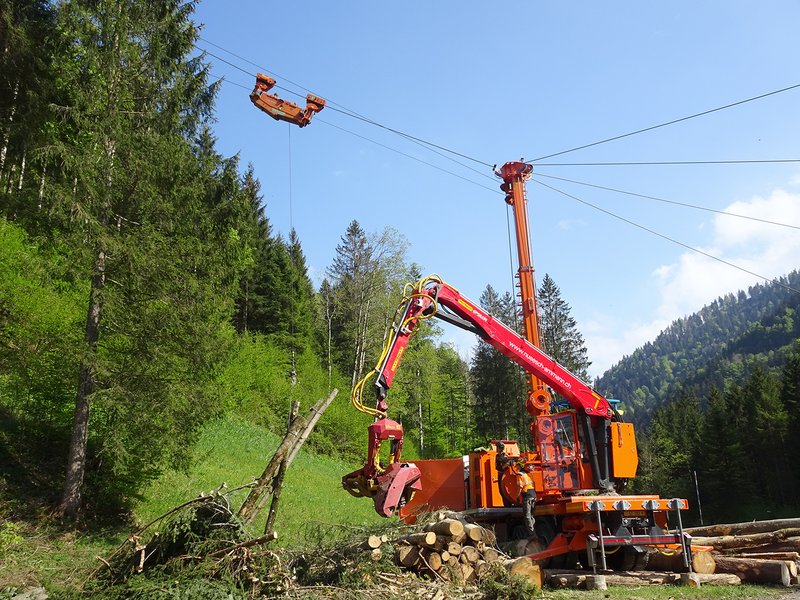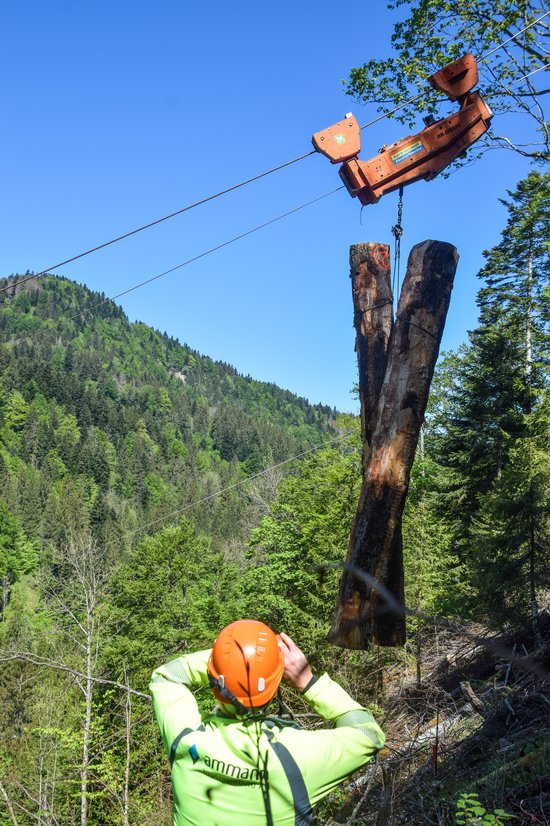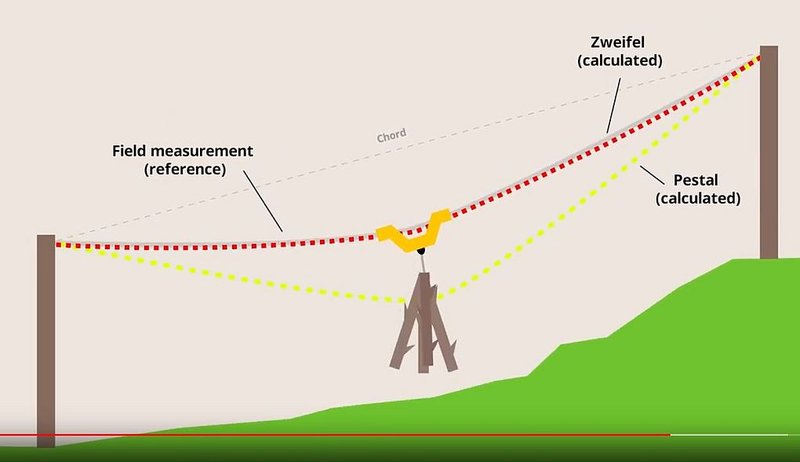Forests must be maintained so that they can provide their valuable services in the long term and sustainably. For the necessary work, the forestry service uses heavy machinery such as tractors and forwarders. However, steep terrain is hardly accessible for these machines. And in the lowlands, care is taken to protect sensitive soils.
In both cases, the cable cranes (also kown as cable yarders) is an alternative: A carriage moving on the skyline is used to transport logs to the collection point (Fig. 1). Such logging methods are currently used on about a quarter of the Swiss forest area. To ensure that the cable road is guided safely and efficiently in each case, the people in charge must carefully plan the system to suit the terrain conditions. This way, the workers on site know where to pull the cable through and where to build intermediate supports.
The optimal calculation formula was ahead of its time
In the 1960s, two professors independently dealt with such ropeway calculatons. Ernst Pestal in Vienna published a book on ropeways and cable yarders at that time, which is considered a standard work in the forestry industry. The cable mechanical formulas described in it is still widely used today, although it overestimates the skyline sags for cranes. Its advantage is that it can be easily calculated by hand and graphically.
At the same time, Otto Zweifel at the ETH in Zurich developed a method that better corresponded to the conditions of cable cranes. In contrast to Pestal, he did not assume a weight-tensioned skyline, but a fixed skyline anchored on both sides (Fig. 2). The snag: To calculate his computation method, powerful computers were needed, which were only available to a limited extent at the time. As a consequence, the method fell into a deep sleep.
New start with new software
Back to today: During his doctoral thesis at ETH Zurich, WSL researcher Leo Bont worked on algorithms that calculate the skyline sags and the occurring skyline tensile forces using Zweifel's method. Together with Patricia Moll, he developed an open source software tool (QGIS plugin) called Seilaplan (Cable Road Layout Designer) in the research group of Prof. Dr. Hans Rudolf Heinimann. In addition to the mechanical properties of the cable road, it calculates the optimal intermediate support positions for the cable road.
Today, Bont works at the Swiss Federal Reseach Institute WSL. As part of the research project "New Foundations for Efficient Cable Road Design", he and his colleagues Laura Ramstein, Janine Schweier and Fritz Frutig have now subjected the theoretical foundations from the doctoral thesis to practical tests in the forest.
The proof of the pudding is in the eating
The team of researchers tested Bont's findings on the steep slopes of the Tösstal, Toggenburg and Pilatus. The forestry companies Nüesch & Ammann AG and Abächerli AG worked with them. They measured the built cable roads and determined the skyline sags at different loads. At the anchor tree, they determined the skyline tensile forces using load cells.
Back in the office at WSL, Bont compared the data with those calculated by Seilaplan. And indeed: The calculation method according to Zweifel led to more accurate predictions of the skyline sags and the skyline tensile forces than those according to Pestal. For all span lengths, the Zweifel formulas integrated in Seilaplan provided an accuracy of about +/- one meter for the sag - a very good result. The slight overestimation of the skyline tensile forces is to be seen as a positive factor, as it puts the user on the "safe side" when planning.
Forestry companies and authorities even beyond the country's borders are showing great interest in the results of the field test and the freely accessible QGIS plugin Seilaplan. A careful and accurate calculation of the cable road is central for economic reasons as well as for work safety. Thanks to the integration of the Seilaplan tool into QGIS, it is also possible to include various remote sensing data and GIS layers for the design.
The Federal Office for the Environment FOEN has funded the research project "New foundations for efficient cable road design" for the transfer of knowledge from research to practice. For this purpose, it has produced the explanatory video "Digital Cable Road Planning".
.
Seilaplan
The QGIS plugin Seilaplan is a GIS-based forest management support tool for designing and optimizing rope line layouts. It was developed in 2012 as part of Dr. Leo Bont's dissertation at ETH Zurich and has been under further development by him at the Swiss Federal Institute for Forest, Snow and Landscape Research WSL since 2017.
Final report in German: Neue Grundlagen für eine effiziente Seillinienplanung (PDF)




